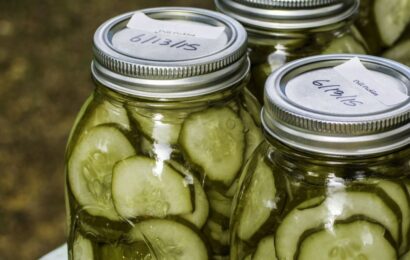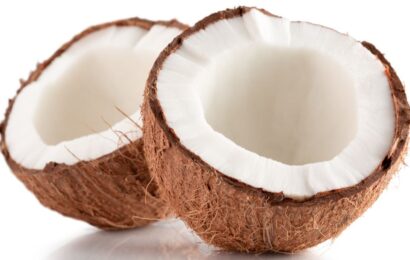Many people enjoy eating melon, especially during the hot summer months. There’s something about a juicy melon that hits the spot when the temperature soars. Cantaloupe is a fan favorite that’s ideal for breakfast, snacking, dessert, or throwing into a smoothie. But is cantaloupe off limits if you have diabetes? Read on to find out!
What is cantaloupe?
Cantaloupe is a member of the muskmelon family that also includes honeydew, Crenshaw, and casaba melon. This tasty fruit dates back to ancient Egypt where it was grown in the Nile River Valley. It was also cultivated by the Greeks and Romans, and soon made its way to Europe, as well as China.
According to foodreference.com, cantaloupe got its name from the town of Cantalupo, outside of Rome. Christopher Columbus is credited for introducing cantaloupe to the Americas. Today, cantaloupes are grown all over the world, and the top U.S. producers are California, Arizona, Colorado, Georgia, and Texas. Annual sales of cantaloupe exceed $300 million. While they’re available year-round, cantaloupes are at their peak in the summer months.
To get cutting-edge diabetes news, strategies for blood glucose management, nutrition tips, healthy recipes, and more delivered straight to your inbox, sign up for our free newsletters!
Health benefits of cantaloupe
Besides being delicious, cantaloupe has a lot going for it, health-wise. Here’s how:
- Eye health: It can help support healthy vision, thanks to its vitamin C, zeaxanthin, and carotenoid — nutrients that reduce macular degeneration and cataracts.
- Heart health: Cantaloupe contains vitamin C, potassium, and fiber which play a role in heart health.
- Cancer prevention: Antioxidants found in cantaloupe may fight inflammation and free radicals that are linked with causing cancer. Plus, the fiber in melon may help reduce the risk of colon cancer.
- Hydration: Cancer is almost 90% water, so eating this fruit is a great way to stay hydrated.
Cantaloupe nutrition
One cup of cantaloupe cubes contains:
- 53 calories
- 0 grams of fat
- 14 grams of carbohydrate
- 1.4 grams of fiber
- 1.3 grams of protein
- 25 milligrams of sodium
- 417 milligrams of potassium
One 4-ounce wedge of cantaloupe contains:
- 23 calories
- 0 grams of fat
- 6 grams of carbohydrate
- 0.6 grams of fiber
- 0.6 grams of protein
- 11 milligrams of sodium
- 184 milligrams of potassium
While cantaloupe is mostly known for its beta-carotene, vitamin C, and potassium content, it also has small amounts of folate, vitamin K, niacin, choline, calcium, magnesium, phosphorous, zinc, copper, manganese, and selenium, making this fruit an all-around healthy choice.
How does cantaloupe affect diabetes?
You might be wondering if you can eat cantaloupe — after all, it’s a fruit, and fruit contains sugar! Cantaloupe does contain natural sugar, but remember that it’s the total carbohydrate content of a food that has the most impact on blood glucose levels.
One cup of cantaloupe cubes has about 14 grams of carb — that’s about the same amount of carb found in a 1-ounce slice of bread, 8 ounces of milk, or an apple the size of a tennis ball. As long as you are counting or at least watching the amount of carb that you consume, cantaloupe can nicely fit into your eating plan. Also, cantaloupe has a low glycemic index, which means that it’s less likely to cause blood sugar spikes compared to other foods.
Other reasons to consider fitting cantaloupe into your diet are that, because of its nutrient content, it can help improve blood pressure and cholesterol levels. Additionally, its water content can help prevent and counteract dehydration from high blood sugars and/or kidney issues. (Of note, if you have kidney disease and need to limit your potassium intake, talk with your health care provider or dietitian about how to safely fit cantaloupe into your diet).
Choosing the best cantaloupe
How do you choose a cantaloupe? Here are tips to help you pick the perfect melon!
- Check for bruises, cracks, soft spots, or moldy areas — steer clear if any of these are present on the melon.
- A cantaloupe should be heavy and firm, and be golden-beige in color underneath the webbing. It should also have a distinctive smell, according to the website The Spruce Eats.
- Tap the melon and listen for a solid sound. If it sounds hollow, look for another melon.
- If the melon isn’t quite ripe, let it sit on your counter for a few days to ripen.
- Be sure to wash cantaloupe very well before cutting, as the skin can harbor salmonella.
How to enjoy cantaloupe
Cantaloupe is perfect eaten “as is,” but if you’re looking for other ideas to enjoy this fruit, check out these tips:
- Puree chunks of melon with some lime juice and fresh mint for a cool melon soup.
- Make kabobs with chunks of cantaloupe and any other favorite fruit.
- Add cantaloupe balls to a green salad.
- Or, whip up a main-dish salad. Here’s a tasty recipe to try.
- Another option is a savory fruit salad: spruce up cantaloupe by adding some chopped red onion, avocado, lime juice, and cilantro.
Want to learn more about eating well? Read “Strategies for Healthy Eating,” “Improving Your Recipes: One Step at a Time,” and “Easy Ways to Eat Better.”





